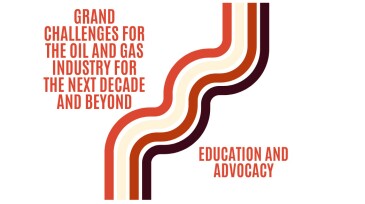Human resources
The decision keeps the effective tax rate on upstream projects at 78%, prompting new warnings that investments will continue to dwindle in the UK Continental Shelf.
Launched by the SPE Integrated Reservoir Management Technical Section, this initiative provides young professionals with opportunities to apply next-generation skills, build confidence, and develop leadership capabilities, preparing them to guide the industry forward.
The Human Resource Development Corporation and Society of Petroleum Engineers Asia Pacific signed a memorandum of understanding to support the development of a future-ready energy workforce and strengthen Malaysia’s position as a regional hub for technical expertise and innovation.
-
The 2025 Global Energy Talent Index survey found most energy professionals got a pay bump last year, but hiring managers face new challenges.
-
TWA Energy Influencers Nihal Darraj, Sayanima Kisku, Ismaila Ibrahim, Olawale Ajayi, and Gabrijel Grubac reflect on the significance of the TWA Energy Influencer award and how it has helped their professional journey. The deadline for 2025 nominations is 1 July 2025.
-
Amia Morgan, SPE, highlights this event designed to bring together students, young professionals, and seasoned industry experts to foster mentorship, inspire the next generation of STEM leaders, and promote inclusivity.
-
TechnipFMC diver Stuart Cowie shares his 17-year experience working as a saturation diver in the oil and gas industry and how to manage mental health and well-being during the often-isolating work demands.
-
Mentorship programs equip women with the tools to excel and help close the gender gap in leadership.
-
Undergraduate education in petroleum engineering has survived the latest downturn in the industry, and enrollment has started to show an uptick in numbers. However, a different trend is evident in graduate training and academic research: the number of researchers being trained in oil and gas topics is drastically dropping.
-
In this exclusive Q&A, Giovanni Cristofoli, senior vice president of bp Solutions, shares insights into how his team is redefining operational strategies and fostering agility to bridge competitive gaps and enhance efficiency. Highlights include the integration of digital tools, data science, and a unified approach to tackling complex problems.
-
Texas, Louisiana, Oklahoma, Colorado, and New Mexico round out the top five states.
-
The energy industry faces a shortage of skilled professionals, and high salaries aren’t enough to attract new talent. We need to show how careers in this field offer meaning and stability, with transferable skills across energy sectors.
-
Industry professionals can use the 20/60/20 approach to recruit those most likely to be won over to oil and gas.
Page 1 of 22













